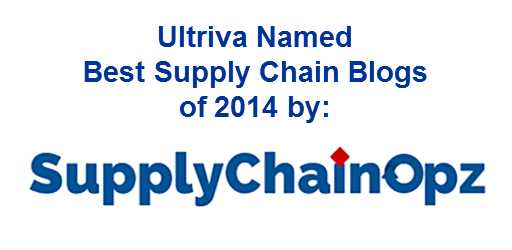How do you efficiently and cost effectively transition to a demand driven supply network without jeopardizing your position in industry or your commitments to your customers?
This is a common question manufacturing executives struggle to answer as they try to develop a demand driven supply network; a business imperative that is being driven by uncertainty in the global economy, a constantly changing regulatory environment, increased competition from low cost providers and inaccurate sales forecasts.
Many executives believe the way to achieve their vision of a demand driven supply network is to develop and implement a comprehensive lean management program. While this approach has been effective for some companies, it has also proven to be very expensive, time consuming and not without its own history of failed initiatives.
It would seem logical that lean management programs should apply equally to both internal processes and external suppliers. However, the reality is lean efforts are disproportionately focused on internal manufacturing processes with supply chain processes and suppliers receiving only cursory level attention. This would make sense if manufacturing is vertically integrated with the supply chain consisting of a small number of raw material suppliers. The reality for today’s manufacturers is quite different. Most manufacturing firms have outsourced large portions of their manufacturing resulting in increased reliance on a larger number of suppliers and increased complexity in supply chain structure.
In addition to the obvious problems that can occur when lean programs are not properly aligned with the key drivers of the business, organizations must also deal with other very real impediments. Two of the most common impediments to implementing traditional lean management programs deal with the human aspects of lean and data aspects of lean.
Leading Impediments to a Traditional Lean Management Program
Human Aspect of Lean
To do it right, lean requires a significant investment in human and financial capital. While this is a well known fact, most organizations are either unable or unwilling to make the investment. The inability stems from the fact that most organizations have downsized and lack the required resources. The unwillingness stems from past experiences with failed improvement initiatives. Those few organizations that can make the investments are then faced with the next set of problems. How do you motivate your people to not only buy-in to the latest improvement initiative but to also actively support the dramatic changes that will be required to become a lean organization? Add to that the wide disparities in staff knowledge and skills, different learning abilities, differing performance measurement systems, and high staff turnover rates and one can begin to understand why so many lean management programs have failed to deliver anticipated benefits or, worse yet, just plain failed.
Data Aspects of Lean
Another leading impediment of lean management programs is the availability of actionable business intelligence (BI) on the current-state performance of an organization’s supply chain. Central to gaining a clear understanding of supply chain performance is the ability to access and analyze the consumption and replenishment patterns of each and every part that goes into the production of their products. Accessing and analyzing this data is an essential step in determining where to establish pull, a primary focus of most lean supply chain programs and the main component in all demand driven supply networks.
Let’s take a simple example of establishing pull for one part between your raw material warehouse and your supplier. In order to properly size the pull loop, one must first determine the average daily demand, standard lot size, supplier’s manufacturing lead-time, transit-time and safety stock buffer size for the part in question. Surprisingly, most MRP and ERP systems do not have this data readily available. If they do, it is often difficult to access and inaccurate. Now multiply this effort by thousands of parts and hundreds of suppliers and you can begin to see why this would a very challenging exercise for even the most capable supply chain organizations.
Without this data, attempts at improving supply chain performance will be limited to the basic lean supplier training sessions where the onus is put on the suppliers to manage pull; an approach that, more often than not, delivers few improvements in supplier performance and a negligible return-on-investment.
Supply Chain Execution Solutions – A Catalyst for Lean
Let us tackle the data impediment first. What if you could continue operating your existing manufacturing and supply chain processes but automate them with a proven SaaS-based (no software required) Supply Chain Execution (SCE) solution that integrates with your existing MRP or ERP system. You pilot the SCE solution for 90 days in order for the system to accumulate sufficient consumption and replenishment history. By the end of the pilot, your SCE system will have all the necessary data to determine which raw materials and components are best suited for pull-based replenishment. Taking into consideration the variability of consumption, specific raw materials and component parts could be quickly switched from the MRP forecast to pull-based replenishment. Once on pull, the raw materials and components are supported by an integrated eKanban solution.
From a process perspective, the SCE solution will initially send MRP forecast-based P.O.s to suppliers and manage them as a closed-loop process with complete visibility throughout the material replenishment cycle. Subsequent to the pilot, parts that have been moved from MRP forecast to pull will be replenished by the SCE solution through the triggering of electronic replenishment signals to suppliers based on actual consumption. Suppliers will acknowledge receipt of the signals, print customer-specific barcode shipping labels and ship the parts. Receiving dock processes will be automated through barcode scanning and P.O. receipt data will be automatically sent to your MRP or ERP system. The only change that will be required after the pilot is to scan a barcode label when the part is being consumed at the point-of-use or issued to a consuming location from your raw material warehouse. At the completion of the SCE pilot, your management team will have the actionable BI and return-on-investment (ROI) data they need to justify scaling the SCE deployment across all plants and all suppliers. Welcome to the world of the demand driven supply network.
Supply Chain Execution Solutions – Less Resistance to Change, Higher ROI
It is our belief that one of the fastest and most effective ways to mitigate risk and improve the ROI of lean management programs is to balance your efforts between your internal processes and the external supply chain. One of the fastest ways to improve the performance of your supply chain is by transitioning to a demand driven supply network.
Please request a demo to learn more about how we can help your organization complete the transition to a demand driven supply network in 2012.



